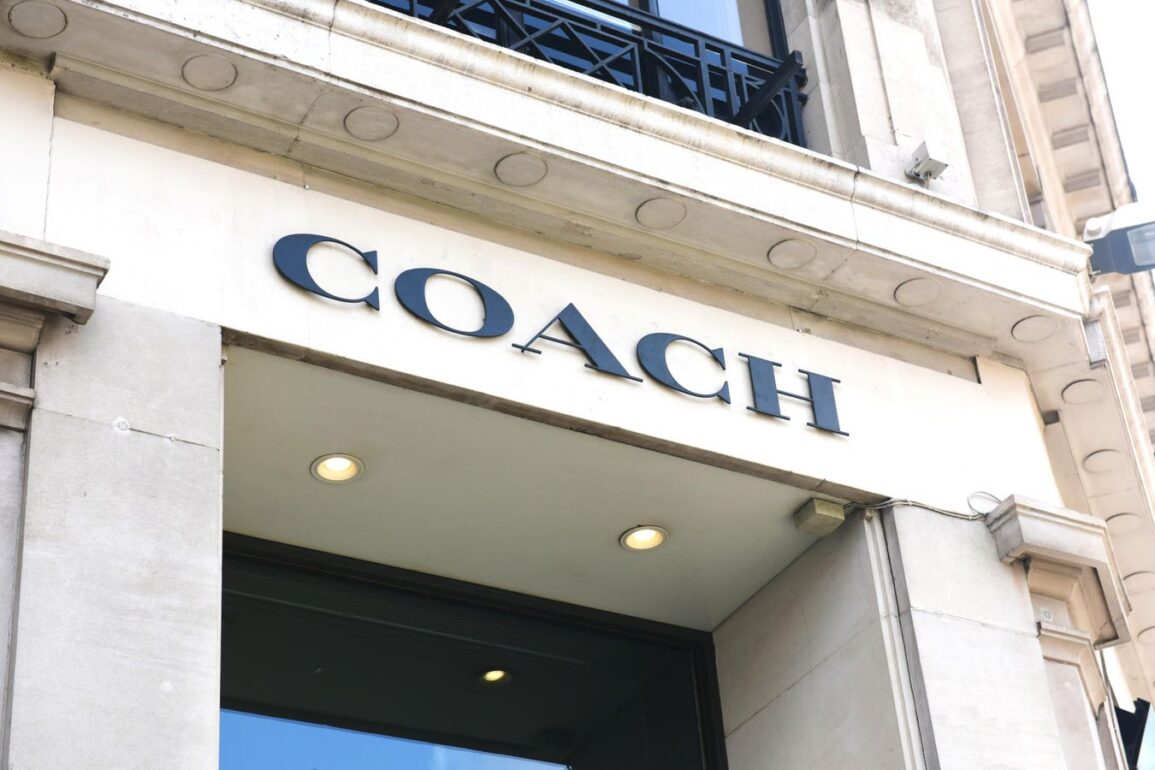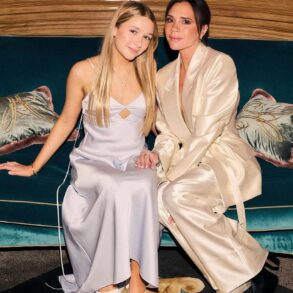
Two legal battles are rocking Tapestry, Inc, owner of the Coach, Kate Spade and Stuart Weitzman brands. One is a more or less routine trademark dispute against Gap
Gap
Earlier this week, the Federal Trade Commission issued an administrative complaint and authorized a federal court lawsuit to block Tapestry’s proposed $8.5 billion acquisition of Capri Holdings and its Michael Kors, Versace and Jimmy Choo brands.
Coming off its fiscal second quarter with revenues up 3% to $2.1 billion and operating profit up 7%, Tapestry had a favorable outlook for the rest year, but now it faces legal bills way beyond those already budgeted for the acquisition.
Tapestry stock opened the month just under $50 per share and took a nose dive after the FTC sued and now trades around $40. Capri stock took a similar tumble, trading at just over $45 on April 1 and now around $35 per share.
‘Accessible Luxury’ On Trial
The FTC took action against the acquisition on anti-competitive grounds. It claims the deal will eliminate head-to-head competition between each company’s brands and thus hurt consumers and the combined companies’ workforces, which would number roughly 33,000 employees worldwide should the acquisition go through.
“With the goal to become a serial acquirer, Tapestry seeks to acquire Capri to further entrench its stronghold in the fashion industry,” Henry Liu, director of the FTC’s Bureau of Competition. “This deal threatens to deprive consumers of the competition for affordable handbags, while hourly workers stand to lose the benefits of wages and more favorable workplace conditions.”
The crux of the anti-competitive allegations hinges on the definition of the “accessible luxury” handbag market. The FTC claims if Tapestry acquires Capri, it would gain a dominant market share thus “dwarfing every other competitor.”
Yet what an “accessible luxury” handbag is hard to define, unlike other product categories where the definition is crystal clear. If it’s on price, Coach has handbags ranging up to $10,000 and many over $500, which isn’t too accessible when comparable leather handbags are widely available under $200.
Michael Kors bags sell in the $50 to $300 range and are frequently on sale, making them much more mass-market than luxury.
GlobalData’s Neil Saunders told Inside Retail that Coach and Michael Kors “fish from different pools” when it comes to the consumer market. “A Michael Kors bag is not, for many, a direct substitute for a Coach one,” he said. As a consumer, I’d agree.
Competition Is And Will Remain Fierce
“The bottom line is that Tapestry and Capri face competitive pressures from both lower- and higher-priced products,” Tapestry said in a statement. Capri added in a separate statement, “Consumers have hundreds of handbag choices at every price point across all channels and barriers of entry are low.”
Tapestry argues forcefully that consumers have a wide range of choices across price points, brands and retailers when shopping for handbags, footwear, apparel and other fashion accessories. No single brand or company can hold monopoly power across the nearly $200 billion U.S. women’s fashion market.
“The FTC fundamentally misunderstands both the marketplace and the way in which consumers shop,” Tapestry stated. “Tapestry and Capri operate in an intensely competitive and high fragmented industry alongside hundreds of rival brands, including both established players and new entrants.”
Capri asserted, “This transaction will not limit, reduce or constrain competition.” Rather it is pro-competition because by combining the two companies, Tapestry will be a more powerful competitor in the global nearly $400 billion luxury market.
FTC Stands Against M&A
Besides blocking the Tapestry-Capri deal on anti-competitive grounds, the FTC makes a case against Tapestry as a serial acquirer.
“Tapestry has engaged in a decade-long M&A strategy through serial acquisitions to achieve its dream of becoming a major American fashion conglomerate. The acquisition of Capri will further entrench Tapestry’s stronghold,” it stated and signaled it won’t look favorably on future acquisitions.
“The deal isn’t likely to be Tapestry’s last, as the acquisition of Capri will give Tapestry additional leverage to make even more acquisitions in the future,” the FTC stated.
While the stated purpose of the FTC is to “promote competition,” it’s doing the opposite. The merger would advance Tapestry’s competitive stance in the global luxury marketplace and potentially encourage other U.S. fashion brands to up their game to deliver more of what consumers are looking for. “Iron sharpen iron,” as they say.
The FTC correctly states, “The FTC does not decide who wins and who loses in the marketplace – consumers do that.” And it should let these companies merge and give consumers the chance to vote with their dollars.
Coach Confusion
On a separate legal battlefront, Tapestry is challenging Gap’s Old Navy brand for using its trademark “Coach” label on T-shirts, pitting the $14.9 billion Gap Inc. and $8.2 billion Old Navy brand against the considerably smaller $5 billion Coach brand. Neither company answered a request for comment.
The suit filled in the Central District of California asserts Old Navy engaged in trademark infringement, unfair business practices and unfair competition by capitalizing on Coach’s “good will” associated with its trademark name – “some of its most valuable assets” the suit claims – and causing confusion in the marketplace.
Just as in the FTC suit where confusion reigns in defining “accessible luxury,” Coach claims that Old Navy can confuse consumers about some alignment or partnership between the brands. That assertion holds water.
Trademark attorney Milton Springut, partner with Moses Singer law firm, observes there is a long history of luxury brands collaborating with mass-market brands. H&M, Target
Target
“Consumers could be confused and think these shirts are part of a similar collaboration with Coach,” he observed.
Springut expects Gap to argue it simply used the term “Coach” in a decorative, generic sense on clothing within the context of sports coaching, “simply to convey the theme rather than to suggest any affiliation with the luxury brand,” he stated.
Evidence disclosed during discovery will be the “game-changer,” he believes, especially if any mention is revealed showing reference to the Coach brand instead of basic explorations around sports-themed messaging. One wonders if Old Navy had simply added “The” to the T-shirt, it could have avoided all the fuss.
Nonetheless, Springut said, “Consumer confusion is the benchmark against which infringement claims are assessed, so if consumers are confused, it could bolster Coach’s case for infringement.”
Rule Of Three
There’s a popular superstition that bad things happen in threes. It’s so widespread that it has an official name: Triphilia, the belief that when bad things come, they come in threes.
Tapestry has been hit by two, so a third one may be around the corner. It could arrive May 9 when Tapestry reports third-quarter earnings since all signs point to a slow down in the luxury market. Or it may come sooner, but for Triphilia believers, it is sure to come.
See also:
This post was originally published on this site be sure to check out more of their content.









